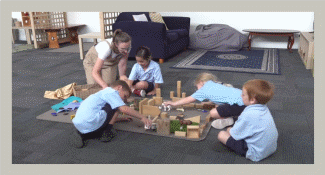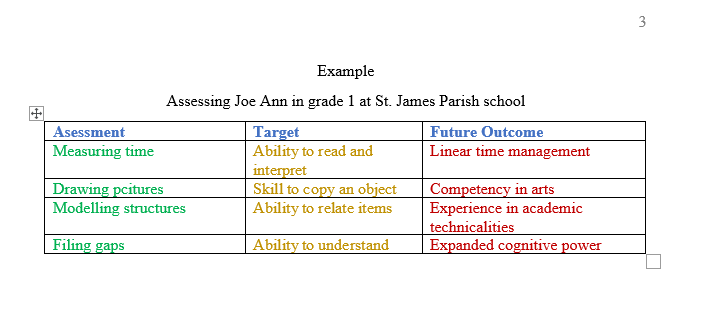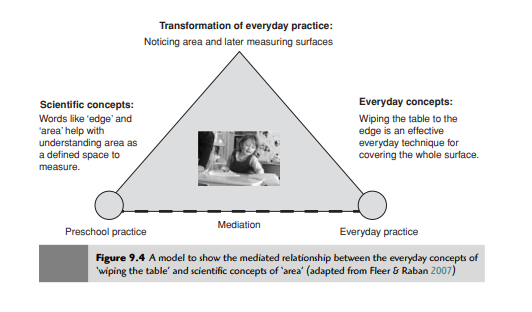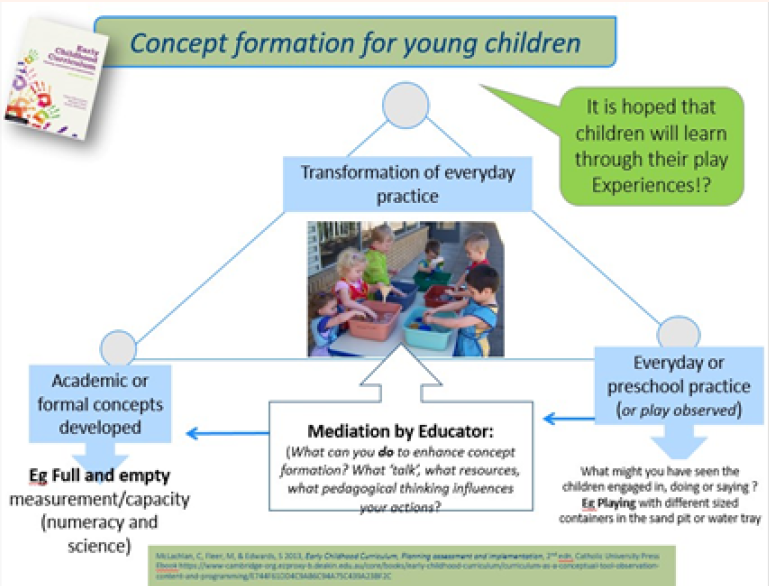Introduction
In the video taken at St. James Parish School, the teacher can be seen guiding learners in the class on making basic structures such as houses and assembling various tools. In the video, there is a boy who is seen to be more active than others and learns by observing matters and moving items around him (Verdon et al., 2018). The child is easily distracted by others’ activities and gets angry when they start tampering with his assembled objects. He forgets what the teacher guides him about the arrangement of the boxes.
The type of summative assessment that will be suitable for this group of young learners is outcome measurement, which means that as a teacher, I will have to closely monitor the progress of the learners after a given period. Additionally, assessment of communication may include reports of the young learners concerning the level of understanding and reach. As seen in figure 1 below, other children are active but not like the boy. To be able to have an impact on the learner on understanding the concepts learned in class, the teacher must focus on the outcome of learning.

Lesson Plan to Address to Respond to the Learning
Table 1: Teaching plan
How Cycle of Planning was Utilized
Notice of learning was achieved through observation as one of the basic cycles in the early years learning framework (EYLF). In this case, I gathered information by simply checking keenly on what learners did and noting the behaviors. Observation is important as it gave key insights into the nature of the learners in terms of cognitive ability, leadership roles, and adherence to common instructions in the class (Lewis, 2019). After observation, I analyzed the data by checking on the possible occurrences and what key drivers define different traits for the learners. Therefore, the action that I took was to perform a summative assessment by telling the learners to rearrange the structures as one way of testing them.

The reason why I chose to give the learners the chance to do the work on their own was to enable them to have retentive memories in class. By having such an assessment, the young learners will be critical of what do to and that would be one way of learning as seen in figure 2 (Malik, 2021). By analyzing the learning, I was able to formulate goals that would enable the class to be progressive. One of the goals was to ensure that there is proper understanding.
The planned approach for the classwork is play-based work whereby students will be able to assemble items as one way of engaging in the constructive development of their minds (Verdon et al., 2018). Such an approach was suitable because it allows the learners to have fun while learning as the EYLF involves young people who may not want to indulge in comprehensive matters rather the contemporary issues familiar to them.
Concept Formation Model
As described by McLachlan, Fleer, and Edwards, the conception formation model suggests that as children grow, they form concepts through interactions with others and also experiences. That means that young people usually form concepts through the senses whereby, they isolate the features of the experiences based on similar notations (McLachlan, Fleer, and Edwards, 2013). By touching, hearing, and seeing, young learners can make conclusions on a given concept and it enables linear learning in early years education frameworks.
The everyday play that I have observed, involves mounding shapes by using materials gotten from the school library. During most of the time, learners usually have mixed reactions from the shapes made as some make interesting while others make strange ones. It leads to collisions as that leads to branding of negative names in the class. I have decided to take pedagogical thinking as mediation concerning the matter. I intend to develop the aspect of accuracy and fiction in learning as shown in the example in figure 3 (Neaum, 2020). By focusing on such academic concepts, students will be able to increase their level of keenness while at the same avoiding taking personal grudges from class discussions.

To enable mediation, the pedagogical thinking will revolve around various approaches in classwork. The appropriate approach useful in this case is universal screening for all learners and short-term close monitoring during the studies. Under this approach, it is possible to have a linear assessment for communication to find whether some learners can be affected by the audibility and destruction of other learners (McLachlan, Fleer, and Edwards, 2013). As a professional, I will not contradict what the learners want as far as it is not restricted by the curriculum and syllabus.

Reflection
Through the assessment, I have realized that early childhood education requires a systemic model of teaching by having a planned assessment and tools that necessitate conceptualization of key elements for learners. I have understood that this group of learners usually get well-educated by having interactive sessions such as plays. The strengths available in the assessment are the implementation of teaching plans through having learning goals and models that facilitate the proper execution of ideas that refer to education.
Additionally, the aspect of having a formation and development of a concept for the learners is advantageous as it makes a teacher have a critical mind in observing issues in class. What needs to be improved include the comprehensive model in concept formulation. If a teacher follows a strict framework, it might call for technical implementation means that may not favor young learners. Additionally, early learning must be checked to avoid the possibility of letting learners fail to differentiate between school and home environments. When learners are aware that there is a schedule in school, they can have that progressive mind that enables them to be ready to undertake classwork in the linear way possible. Therefore, the assessment is industrious as it improves the pedagogical skills in early education.
Reference List
Krieken Robson, J. (2019) ‘Participatory pedagogy for values education in early childhood education, European Early Childhood Education Research Journal, 27(3), pp.420-431.
Lewis, A. (2019) ‘Examining the concept of well-being and early childhood: adopting multi-disciplinary perspectives, Journal of Early Childhood Research, 17(4), pp.294-308.
Malik, S. (2021) ‘Parental involvement in early childhood education in Punjab: a Qualitative Study’, Revista Gestão Inovação e Tecnologias, 11(3), pp.785-797.
McLachlan, C., Fleer, M. and Edwards, S. (2013) Early childhood curriculum. 2nd ed. Cambridge: Cambridge University Press.
Neaum, S. (2020) ‘Children’s ways-of-knowing. learning through intent participation in the early years, Early Years, 4(9), pp.1-14.
Verdon, S., Mackenzie, N., McLeod, S., and Davidson, C. (2018). Assessment of children as effective communicators in early childhood education and care: a literature review. Melbourne: Charles Sturt University, pp.10-28.
Veresov, N. and Fleer, M. (2016) ‘Perezhivanieas a theoretical concept for researching young children’s development, Mind, Culture, and Activity, 23(4), pp.325-335.
